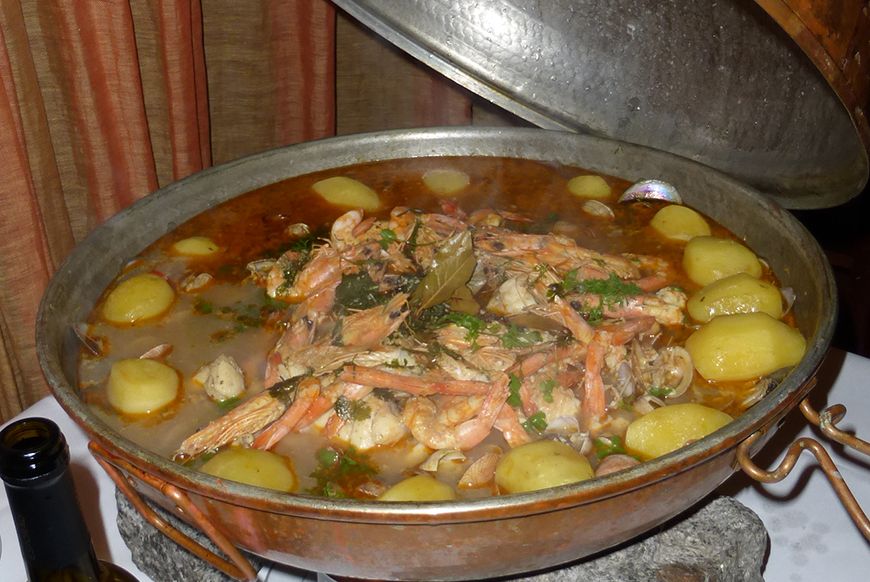Apr 23, 2015
We Kudus like our food and wine and eating typical regional dishes accompanied by local wines (where available) is an important aspect of each tour. It won’t be a great surprise that we eat a lot of fish and seafood in southern Portugal on the Cape St. Vincent ~ Walks and Orchids on the Edge of Europe tour and on the recent adventure guests remarked on the high quality and variety we were able to enjoy.
Perhaps the most typical of the dishes we had is the Cataplana. The word is used for both the copper dishes (which look like a round tajine) and the stew made in it.
According to our guide, Carla, only certain types of fish can be used and you have to add them in the right order for them to cook evenly.
This is what you need:
Monkfish (Tamboril in Portuguese) ~ Ray (Raia) ~ Seabass (Robalo) ~ Clams (Ameijoas) ~ Shrimps (Camarão)
White wine, Tomatoes, Onions, Red Bell Pepper, Green Bell Pepper, Garlic, Bay leaf, Coriander and Parsley
This is how you do it: Cook garlic and onion in olive oil. Add tomatoes and peppers to make a sauce with wine. Then cook the bass and monkfish in the sauce. After a few minutes add the ray and shrimps. The clams go in last. A lot of fresh parsley and coriander for garnish!
And Carla certainly knows her fish as we learned when she took us to the afternoon wholesale fish market in Sagres harbour. She gained the knowledge of how to choose, prepare and cook seafood from her parents, who are both chefs, and by actually working as a buyer in the market herself.
Other dishes we sampled included Monkfish and Prawn Skewer; Red Snapper baked with Oranges and White Wine; Grilled Line-caught Gilthead Bream; Rice with Octopus; Ray in Garlic and White Wine Sauce; Grilled Scabbard Fish; Clams with Garlic, Coriander and Olive Oil and for some brave souls in our party Perceves – Goose Barnacles which the Portuguese and Spanish value highly.
The wines we tasted were mostly from the Alentejo but we also tried some less well known wines from the Algarve that are increasing in popularity as their quality improves.


